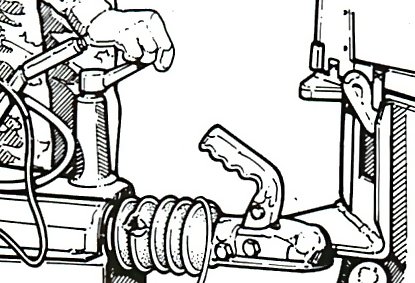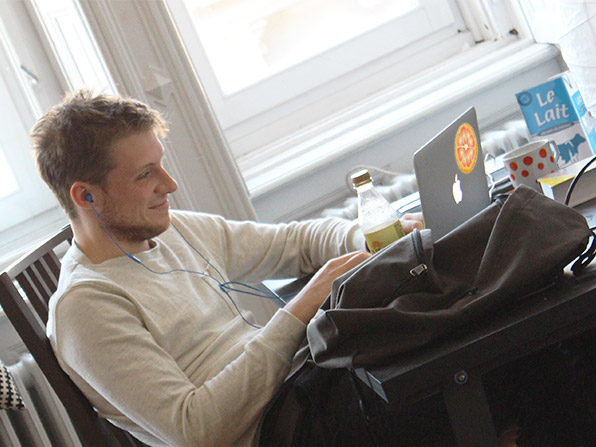Towing a trailer or caravan is potentially dangerous, and requires considerable skill. The trailer or caravan reduces performance and braking power and can radically alter the way the car handles. Towing can be a safe proposition, though, if you take care and adapt your style of driving to suit.
The crucial thing to remember when you're towing a large caravan is size - you'll be taking up a lot of road space, in both length and width. When you overtake an obstruction, you have to stay on the wrong side of the road for longer to allow the caravan to clear it too.
Width is an important factor because it's quite possible that the trailer or caravan won't fit into gaps you can get the car through - all too easy to forget.
How to hitch a trailer
This video course is the best way to learn everything about cars.
Three hours of instruction available right now, and many more hours in production.
- 4K HD with full subtitles
- Complete disassembly of a sports car
Raise the socket to just below the car's towing ball height by cranking up the jockey wheel's handle.
Release the handbrake, lift the socket by its handle and fit it over the towing ball.
Crank up the jockey wheel. Release the locking mechanism and slide the wheel into its stowed position.
Check that the socket catch has locked on to the towing ball by trying to left the drawbar.
Fit the safety chain over the towing ball making sure it cannot come off.
Plug in the trailer or caravan's cable to connect the electrics. Fold the flap over the plug.
Accelerating
The main difference you will notice when you accelerate with a caravan or trailer hitched behind is that it takes much longer to gather speed because of the extra weight the car has to pull. For this reason, you will need to allow more time for overtaking.
When starting off from rest, keep the engine revs well up to get away cleanly without stalling. Once you are going you can partly compensate for the extra weight by keeping the engine turning faster than normal, but in a lower gear, until you have settled down to a steady cruising speed. It's tempting to gather momentum by going quickly down a hill to take a run at the other side, but it is best to avoid this because you might not have enough stopping power in hand.
Braking
The overall braking power of the car and caravan combined is less than that of the car when driven solo, so you should remember to start braking much earlier than normal when towing.
Avoid overusing the brakes during long descents - they will overheat and fade much faster than if the car were solo.
Corners
Corners
Because of the extra length of the caravan or trailer, the car has either to take a wider line on corners, or begin its turn in slightly later than it usually does in order to prevent the caravan's inner wheel from clipping the kerb.
Tight corners - in towns or on twisty roads - present problems. The extra length (and in some cases width) of the trailer or caravan behind the car means that you have to begin the turn later or drive further out from the inside edge of the corner than if the car were solo. If you place the car normally, the trailer's wheels will probably run up the kerb or verge on the inside of the corner.
Reversing
Reversing
When you turn the steering wheel to one side, the caravan will turn in the other direction. Think of the car as the caravan's front wheels to work out which way to go. Once the caravan has started to turn, straighten up the steering wheel.
The most difficult manoeuvre to perform while towing is reversing. The biggest problem is that the caravan or trailer will want to turn in the opposite direction to the way the car's steering wheel is turned and will try to run off to one side even if you try to hold it straight. Ultimately, the car and caravan will end up jack-knifed against each other.
To avoid this, correct any steering inputs as soon as the caravan is turning enough. If it goes too far, stop and pull forward to straighten it up, then try again.
Another difficulty when reversing is that the caravan blocks your rearward vision - this doesn't always happen with a trailer because it is usually low enough to see over. Unless you are absolutely sure that there is no danger of reversing into something, get a helper to act as a look-out.
If you need to reverse or even turn round in a very tight space, it is much easier and quicker to unhitch the caravan or trailer and manoeuvre it by hand, hitching it up again when you have turned round. If you get completely stuck during a manoeuvre, this will be your only way out.
Driving conditions
Poor weather conditions badly affect towed caravans and high trailers. Even a car that is stable by itself can be swayed off course by a caravan heaving in side winds. Other high-sided vehicles can produce lulls and gusts of wind that attract then push away the caravan or rock it as you drive past them in windy conditions.
When cornering on a slippery road, there is a possibility that the caravan will lose its grip and swing out. If this happens, your chances of safely catching it again are remote.
The answer to both these problems is to take extra care when you are towing: drive smoothly (without accelerating or braking harshly), keep your speed down, and always look ahead.




